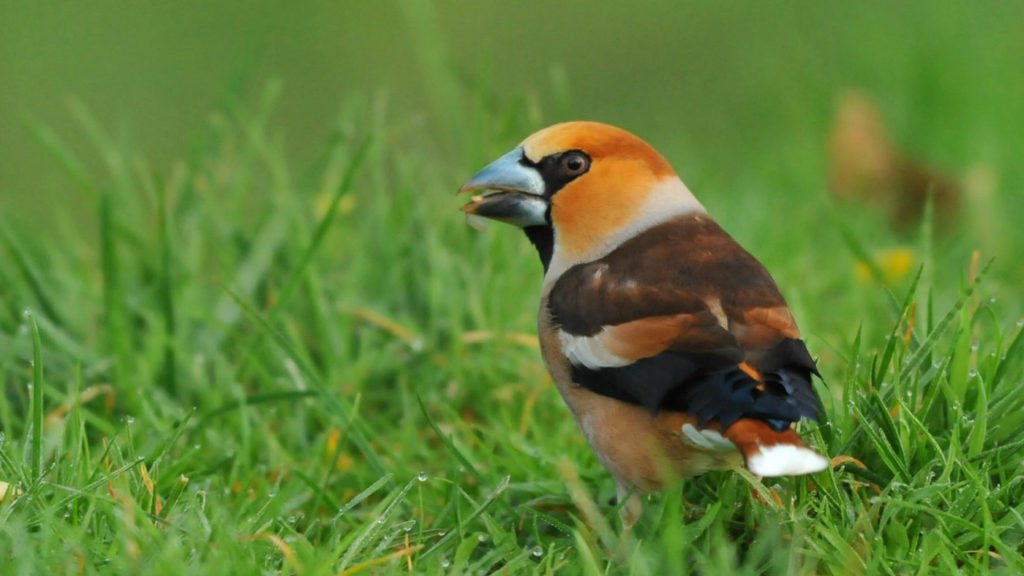Hawfinches have massive bills powerful enough to split even cherry stones, and enjoy a near-mythical status among birdwatchers, being among the hardest of all British birds to spot “They’re uncommon, spend a lot of time hidden in the forest canopy and their song is exceptionally weak and quiet,” explains Jerry Lewis, one of the country’s leading experts on these gorgeous, thick-set finches.

“But after several years of ringing hawfinches in the Forest of Dean, I realised that they visit the ground far more frequently between March and early May. At this time, I can see flocks 20-strong and my ringing success rate is higher. I suspect it is because the previous autumn’s seed crop has run out in the treetops, forcing birds to forage among the leaf litter for fallen seeds until fresh buds and elm seeds – which fruit in spring – become available again.
“My research site is among lovely old hornbeams on land belonging to the Forestry Commission, which kindly provides the sunflower seeds that I scatter in front of my ringing nets. Hawfinches ringed by me have turned up in North Wales, Hertfordshire and Somerset, which is good news – it proves that there is movement between the species’ few remaining isolated UK populations.”















